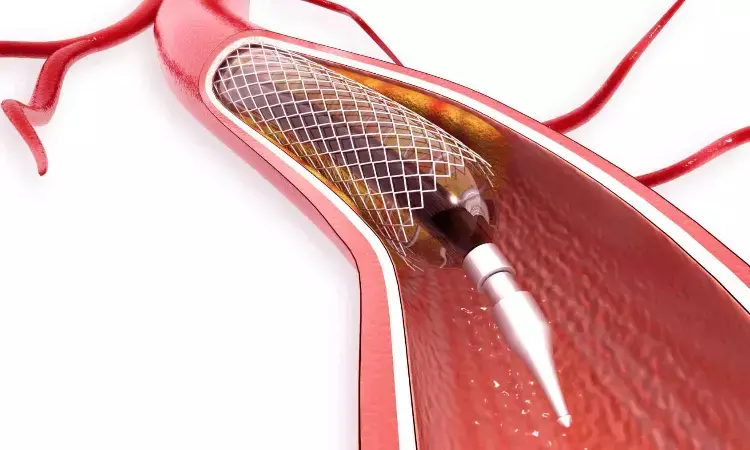- Home
- Medical news & Guidelines
- Anesthesiology
- Cardiology and CTVS
- Critical Care
- Dentistry
- Dermatology
- Diabetes and Endocrinology
- ENT
- Gastroenterology
- Medicine
- Nephrology
- Neurology
- Obstretics-Gynaecology
- Oncology
- Ophthalmology
- Orthopaedics
- Pediatrics-Neonatology
- Psychiatry
- Pulmonology
- Radiology
- Surgery
- Urology
- Laboratory Medicine
- Diet
- Nursing
- Paramedical
- Physiotherapy
- Health news
- Fact Check
- Bone Health Fact Check
- Brain Health Fact Check
- Cancer Related Fact Check
- Child Care Fact Check
- Dental and oral health fact check
- Diabetes and metabolic health fact check
- Diet and Nutrition Fact Check
- Eye and ENT Care Fact Check
- Fitness fact check
- Gut health fact check
- Heart health fact check
- Kidney health fact check
- Medical education fact check
- Men's health fact check
- Respiratory fact check
- Skin and hair care fact check
- Vaccine and Immunization fact check
- Women's health fact check
- AYUSH
- State News
- Andaman and Nicobar Islands
- Andhra Pradesh
- Arunachal Pradesh
- Assam
- Bihar
- Chandigarh
- Chattisgarh
- Dadra and Nagar Haveli
- Daman and Diu
- Delhi
- Goa
- Gujarat
- Haryana
- Himachal Pradesh
- Jammu & Kashmir
- Jharkhand
- Karnataka
- Kerala
- Ladakh
- Lakshadweep
- Madhya Pradesh
- Maharashtra
- Manipur
- Meghalaya
- Mizoram
- Nagaland
- Odisha
- Puducherry
- Punjab
- Rajasthan
- Sikkim
- Tamil Nadu
- Telangana
- Tripura
- Uttar Pradesh
- Uttrakhand
- West Bengal
- Medical Education
- Industry
Optical coherence tomography outperforms conventional angiography for stent guidance in complex cases, reports research

Using optimal coherence tomography (OCT) to guide stent implantation during percutaneous coronary intervention (PCI) in patients with complex coronary lesions significantly improves survival and reduces adverse cardiovascular events compared to angiography-guided PCI, the most commonly used method, according to late breaking research presented in a Hot Line Session at this year’s ESC Congress 2024 in London, UK (30 Aug – 2 Sept).
“Our results show that the use of OCT guidance improves clinical outcomes and enhances safety and effectiveness of coronary stenting, reducing cardiac death, myocardial infarction, stent thrombosis, and the need for revascularisation by 38% in a group of very complex patients, which more reflects contemporary interventional cardiology practice,” said lead investigator Professor Byeong-Keuk Kim from Yonsei University Severance Hospital, Seoul, Korea.
Patients with coronary artery disease-plaque buildup inside the arteries that leads to chest pain, shortness of breath, and heart attack-often undergo PCI, a non-surgical procedure that uses a catheter to place stents in the blocked coronary arteries to restore blood flow. Angiography is the most commonly used method to guide PCI, which involves a special contrast dye and X-ray to see how blood flows through the heart arteries to highlight any blockages.
OCT uses light instead of X-ray to create cross-sectional and longitudinal images, which have much higher resolution and are more accurate, and more detailed compared to angiography.
Previous studies have suggested practical benefits of OCT-guided PCI by providing comprehensive information on coronary vessels, plaques, and implanted stents. This latest study follows up on findings of the OCTOBER trial published in 2023 showing that OCT-guided PCI of complex bifurcation lesions is superior to angiography-guided PCI for cardiovascular outcomes at 2 years.
The OCCUPI trial enrolled 1,604 patients (aged 19 or older) from 20 centres in The Republic of Korea with anatomically complex lesions requiring PCI using drug-eluting stents.
Patients were randomised in a 1:1 ratio to undergo either OCT guidance (803 patients) or angiography guidance (801 patients). In total, 1,588 (99%) patients completed the 1-year follow-up.
The main (primary) measure of interest was a composite of cardiac death, myocardial infarction, stent thrombosis, and target-vessel revascularisation (procedure that restores blood flow) at 1 year.
At 1 year follow-up, patients who received OCT guidance experienced a 38% reduction in the combined risk of cardiac death, heart attacks, stent thrombosis, and the need for revascularisation compared with angiography guidance (37 patients, 4.6% vs 59 patients, 7.4%, respectively).
Notably, patients who received OCT guidance were 64% less likely to experience a spontaneous myocardial infarction (excluding periprocedural myocardial infarction) or require target-vessel revascularisation than those in the angiography-guided group (0.9% vs 2.4% and 1.5% vs 4.1%, respectively).
The study also found that the incidence of contrast-induced nephropathy (damage to kidney) after PCI was not significantly different between two groups (1.3% vs 0.9%).
“Our findings provide more evidence that OCT guidance of PCI procedures in patients with complex lesions has a greater impact on improving their lives than conventional angiography guidance,” said Professor Kim. “We now need to establish detailed standard for optimal use of OCT for the improvement of clinical outcomes of PCI for complex cases based on the OCCUPI trial.”
Dr Kamal Kant Kohli-MBBS, DTCD- a chest specialist with more than 30 years of practice and a flair for writing clinical articles, Dr Kamal Kant Kohli joined Medical Dialogues as a Chief Editor of Medical News. Besides writing articles, as an editor, he proofreads and verifies all the medical content published on Medical Dialogues including those coming from journals, studies,medical conferences,guidelines etc. Email: drkohli@medicaldialogues.in. Contact no. 011-43720751


